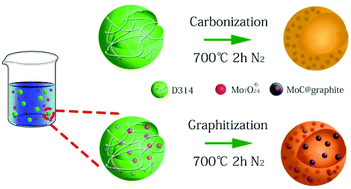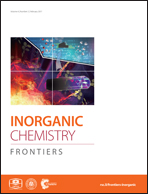MoC ultrafine nanoparticles confined in porous graphitic carbon as extremely stable anode materials for lithium- and sodium-ion batteries
Abstract
Molybdenum carbide (MoC)/graphitic carbon nanocomposites are synthesized using a green and facile method. Well-crystallized MoC ultrafine nanoparticles (<5 nm diameter) are formed in situ inside the pores of a highly conductive graphitic carbon matrix. The resulting MoC/graphitic carbon nanocomposites exhibit very promising electrochemical performance when evaluated as anodes in LIBs and SIBs, because the synergistic effects of the small MoC nanoparticles provide fast and efficient transport and porous graphitic carbon can prevent continual rupturing as well as enhance conductivity. Meanwhile, this novel material has potential for broad application in rechargeable batteries, maintaining a reversible capacity of 742 mA h g−1 after 50 cycles at 200 mA g−1 for LIBs and a discharge capacity of 250 mA h g−1 after 50 cycles at 50 mA g−1 for SIBs. Furthermore, the required Mo can be recovered from wastewater, which gives this method an added environmental benefit and in return satisfy the current demand for sustainable development.


 Please wait while we load your content...
Please wait while we load your content...